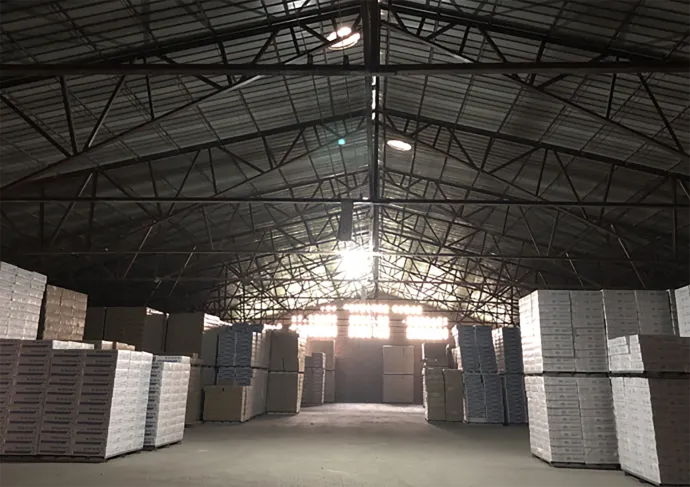9 月 . 02, 2024 05:00 Back to list
what is ceiling grid
Understanding Ceiling Grids An Overview
A ceiling grid, often referred to as a suspended ceiling system, is a framework used in construction and design to create a decorative, functional ceiling. It consists of a grid layout made from metal, which supports tiles or panels, allowing for easy access to the space above, such as ductwork, plumbing, or electrical systems. This versatile system has become increasingly popular in various settings, from commercial buildings and offices to residential homes.
Structure and Components
The ceiling grid typically includes main runners, cross tees, and edge trim. Main runners are the long primary supports that run across the ceiling, while cross tees are shorter pieces that connect to the runners, forming a grid-like pattern. The tiles or panels are then fitted into this grid, which can vary in size depending on design requirements. Commonly, the grid is installed about 4 to 12 inches below the original ceiling, creating a cavity that can be useful for concealing utilities.
Materials and Aesthetics
Ceiling grids can be made from a variety of materials, including aluminum, steel, or even lightweight plastics. The choice of material often depends on the application and desired aesthetics. For instance, aluminum grids are lightweight and resistant to corrosion, making them ideal for high-humidity areas, such as bathrooms or kitchens. Steel grids are more robust and commonly used in commercial settings.
what is ceiling grid

From a design perspective, ceiling grids can enhance the aesthetic appeal of a space. They are available in numerous colors, finishes, and styles, allowing designers to match the ceiling with the overall theme of the room. Some advanced grids also incorporate decorative tiles that can serve as acoustic panels, providing sound absorption to reduce noise levels within the space.
Practical Benefits
One of the most significant advantages of ceiling grids is their practicality. They allow for easy access to the ceiling void, enabling maintenance of electrical, plumbing, and HVAC systems without the need for major renovations. This accessibility is particularly beneficial in commercial spaces where frequent adjustments and inspections are necessary.
Furthermore, the installation of a ceiling grid can improve insulation and energy efficiency. By utilizing tiles with insulating properties, the space can maintain a more consistent temperature, reducing heating and cooling costs. Additionally, ceiling grids can incorporate acoustic control features, contributing to a quieter, more pleasant environment.
Conclusion
In conclusion, ceiling grids are a vital component of modern construction and design, offering both functional and aesthetic benefits. Their versatility in materials, designs, and applications makes them suitable for various environments, from industrial settings to cozy residential spaces. By carefully selecting the right ceiling grid, property owners and designers can enhance the functionality and appeal of any room while also ensuring the systems above remain easily accessible and well-maintained. Whether for aesthetic enhancement or practical purposes, ceiling grids play an essential role in today’s architectural landscape.
-
Revolutionizing Interior Design with Ceilings t grid Suspended SystemNewsOct.29,2024
-
Revolutionizing Ceiling Design with ceiling access panel with Gypsum Tile WaterproofNewsOct.29,2024
-
Revolutionizing Interior Design with PVC Gypsum Ceiling: A Comprehensive GuideNewsOct.29,2024
-
Elevating Interior Design with High quality Mineral Fiber Ceiling TilesNewsOct.29,2024
-
Revolutionizing Interior Design with PVC Gypsum Ceiling: A Comprehensive GuideNewsOct.29,2024
-
Elevating Interior Design with High-Quality Mineral Fiber Ceiling Tiles: A Comprehensive GuideNewsOct.29,2024







